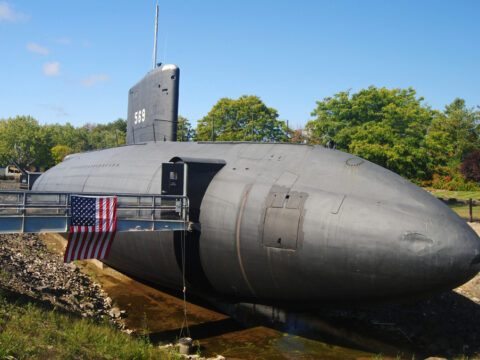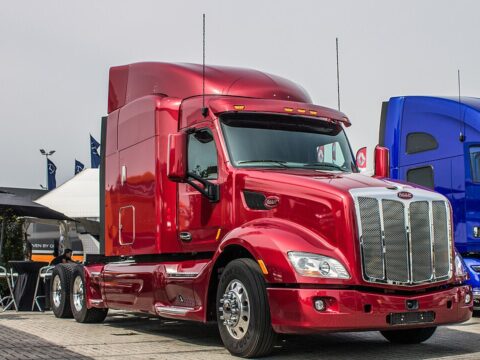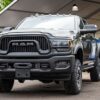As family needs evolved and automotive trends shifted, many minivans that once ruled the roads found themselves struggling to keep up with changing demands. For decades, minivans were the go-to vehicles for families, offering spacious interiors, safety, and a comfortable ride that could accommodate everyone. However, as SUVs grew in popularity, boasting versatility, style, and rugged appeal, many consumers began to prefer these models over the traditional minivan. With rising competition from the SUV market and the crossover’s newfound appeal, minivans had to either evolve or risk losing relevance altogether.
The result was a dramatic shift in the automotive landscape, where some minivans couldn’t keep up with the new expectations for family vehicles. Factors like limited technological advancements, outdated designs, and an inability to meet modern safety or performance standards left many of these models behind. In an era where versatility, advanced features, and sleek designs became the benchmark, these once-beloved minivans gradually faded from dealership lots. Here, we take a closer look at how shifting consumer tastes and market pressures contributed to their decline.
Contents
Nissan Quest

The Nissan Quest once catered to families seeking a spacious, reliable vehicle but ultimately lost its footing as SUVs gained popularity. While it featured a comfortable interior and decent fuel efficiency, the Quest failed to keep up with its competitors in terms of technological advancements and design. Nissan’s gradual shift toward SUVs left the Quest feeling outdated, and consumer demand waned as other brands offered sleeker, more versatile models. By the mid-2010s, the market for traditional minivans had diminished significantly, sealing the Quest’s fate.
Mazda MPV

Mazda’s MPV, known for its compact design and nimble handling, appealed to those who wanted a smaller minivan. However, as the market demanded larger, feature-rich vehicles, the MPV struggled to remain competitive. Mazda pivoted toward the burgeoning SUV market, where it saw more potential for growth. The MPV’s limited size and basic features became drawbacks in a market increasingly focused on luxury and technology. The model was ultimately phased out as Mazda concentrated on models like the CX-9 to capture the SUV trend.
Ford Freestar

Ford introduced the Freestar as a family-friendly minivan, hoping to appeal to suburban households. However, the minivan lacked the innovation and refinement that competitors began to prioritize, such as advanced safety features and improved fuel economy. As SUVs grew more practical for families, the Freestar couldn’t meet rising expectations and struggled with dwindling sales. Ford decided to move away from minivans entirely, focusing instead on SUVs like the Explorer and the Escape.
Toyota Previa

Toyota’s Previa stood out for its unique mid-engine layout, which gave it a distinctive look and drive feel. However, this design also compromised interior space, an essential feature for family vehicles. As SUVs become more spacious and affordable, demand for unconventional minivans like the Previa plummeted. Toyota discontinued the model in the late 1990s, redirecting its efforts toward SUVs and crossovers like the Highlander, which better suited the evolving family vehicle market.
Chrysler Town & Country

The Chrysler Town & Country initially thrived, offering a luxurious minivan experience with high-end features and a comfortable interior. However, its premium positioning struggled to resonate as more families turned to SUVs, which combined luxury with rugged appeal. Chrysler tried to modernize the Town & Country, but rising competition from brands offering more affordable minivans and SUVs eroded its market share. Eventually, Chrysler replaced it with the Pacifica, adapting to the new SUV-oriented landscape.
Mercury Villager

The Mercury Villager shared its platform with the Nissan Quest, but the partnership couldn’t sustain it as the minivan market shrank. Villager struggled to differentiate itself, and consumers gravitated toward SUVs and crossovers that were perceived as trendier and more versatile. Mercury’s brand identity, geared more towards affordability, clashed with the high expectations of minivan buyers looking for premium features, ultimately leading to the model’s discontinuation.
Pontiac Montana

Pontiac’s Montana aimed to capture attention with a rugged, SUV-inspired design, but it couldn’t meet the market’s expectations for a versatile family vehicle. Its interior felt outdated compared to other options, and it lagged in safety and technological advancements. As SUVs dominated, Montana’s lack of refinement and appeal led Pontiac to phase it out. General Motors eventually shuttered Pontiac, signaling the end for the Montana and other struggling models
Ford Windstar

Ford’s Windstar attempted to capture the family market but struggled with mechanical issues and recalls that hurt its reputation. While it was one of the safer minivans of its time, these problems reduced consumer trust. As SUVs gained momentum, the Windstar’s value proposition weakened, and Ford found it more profitable to focus on its expanding SUV lineup. The Windstar was phased out as part of Ford’s retreat from the minivan segment.
Chevrolet Uplander

The Chevrolet Uplander, marketed as a crossover minivan, attempted to bridge the gap between SUVs and minivans. However, it failed to excel in either category, leaving buyers unimpressed. The Uplander’s outdated design, limited features, and uninspired performance couldn’t compete with more refined SUVs. Chevrolet eventually shifted its focus entirely to SUVs, with the Uplander quietly exiting the lineup in favor of models like the Traverse.
Dodge Caravan

The Dodge Caravan pioneered the minivan category but struggled to evolve as consumer tastes changed. While it remained a strong seller for years, its design and features fell behind as SUVs offered more versatile and stylish options. The Caravan’s affordability remained a draw, but declining interest in minivans led Dodge to sunset the model, consolidating efforts around SUV and crossover segments that better suited the modern family’s needs.
Saturn Relay

Saturn’s Relay minivan suffered from brand-wide struggles as GM’s experimental marque lost consumer confidence. Although it aimed to bring a sleek, crossover feel to the minivan market, it failed to attract the attention Saturn hoped for. The Relay’s lackluster performance and minimal features left it overshadowed by SUVs. When Saturn was dissolved, the Relay was discontinued, marking an end to Saturn’s brief foray into family-oriented vehicles.
Kia Sedona

Kia’s Sedona found modest success but struggled to shake off its reputation as a budget minivan. Although it offered solid value, the Sedona couldn’t attract families looking for premium options. Kia eventually leaned into the SUV trend, prioritizing models like the Sorento and Telluride over its minivan. The Sedona was rebranded as the Carnival with a more SUV-like style, to align with shifting market trends.
Oldsmobile Silhouette

The Oldsmobile Silhouette targeted families with a luxurious touch, yet its lack of innovation failed to capture lasting interest. As SUVs gained popularity, Oldsmobile struggled to maintain the Silhouette’s appeal. General Motors began scaling back Oldsmobile, phasing out the Silhouette as the brand was shuttered. The minivan’s traditional design simply couldn’t compete with the rising wave of modern SUVs.
Honda Odyssey (Early Models)

Early models of the Honda Odyssey featured a compact design and sliding doors but struggled with lackluster engine power and limited interior space. As Honda revamped the Odyssey to better compete, early versions were overshadowed by redesigned models and SUVs offering more features. Despite the Odyssey’s eventual resurgence, initial versions struggled in a market already leaning toward SUV versatility and size.
Volkswagen Routan

Volkswagen’s Routan, essentially a rebadged Chrysler Town & Country, entered the market when minivan demand waned. Its lack of unique features and the limited appeal of its Chrysler DNA failed to attract consumers. Volkswagen’s brand reputation as an innovator didn’t align with the Routan’s conventional design, prompting Volkswagen to exit the minivan market as consumer interest in SUVs as the Tiguan grew.
This article originally appeared on MyCarMakesNoise.
More from MyCarMakesNoise
13 Luxury Cars That Didn’t Live Up to the Hype

When it comes to luxury cars, expectations are always high. Buyers anticipate top-notch performance, cutting-edge technology, and impeccable design. Read More.
19 Imported Cars That Are Difficult to Maintain in the U.S.

Owning an imported car can be exciting, but maintaining one in the U.S. often comes with its own set of challenges. From scarce parts to unfamiliar mechanics, keeping these unique vehicles on the road can be a daunting task. Read More.
10 Game-Changing Engine Mods to Maximize Power

Enhancing your vehicle’s performance often starts with making radical engine modifications. For both seasoned car enthusiasts and those new to the high-performance scene, understanding key engine upgrades can unlock a car’s full potential. Read More.














